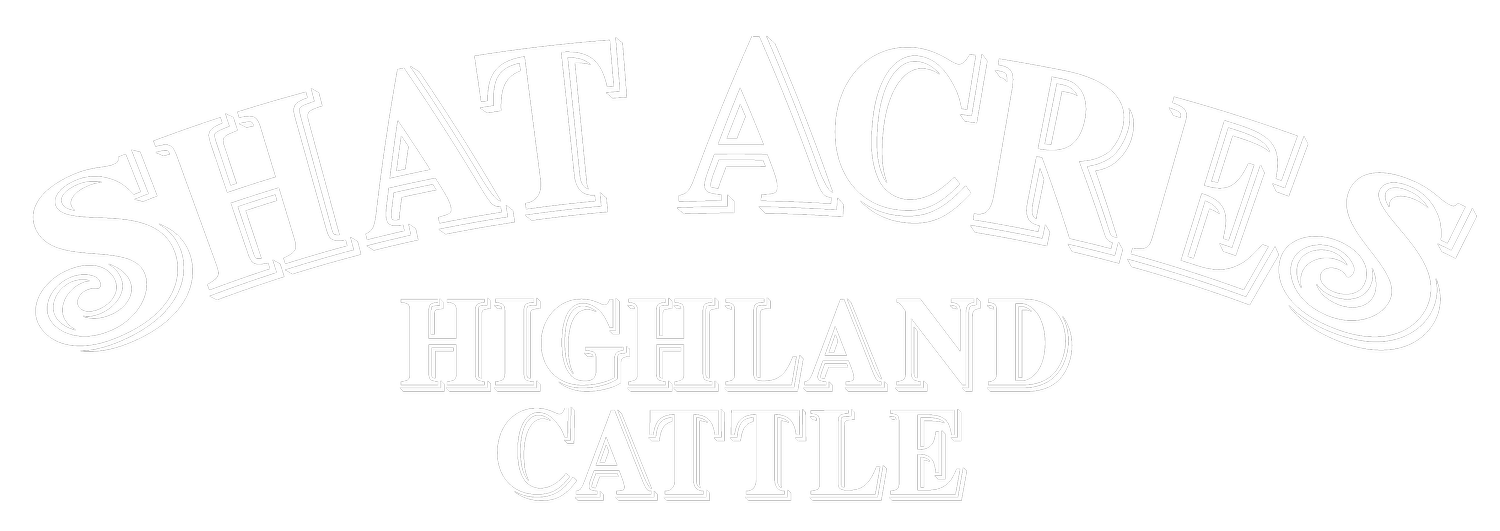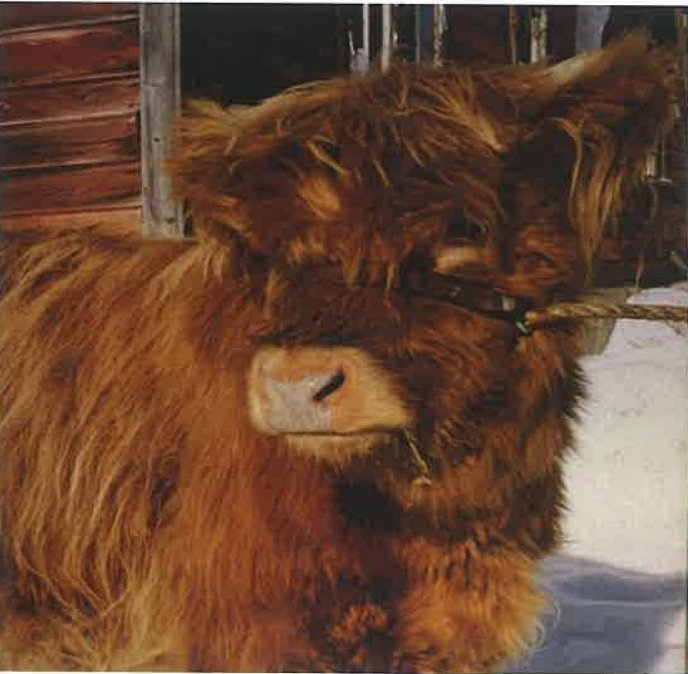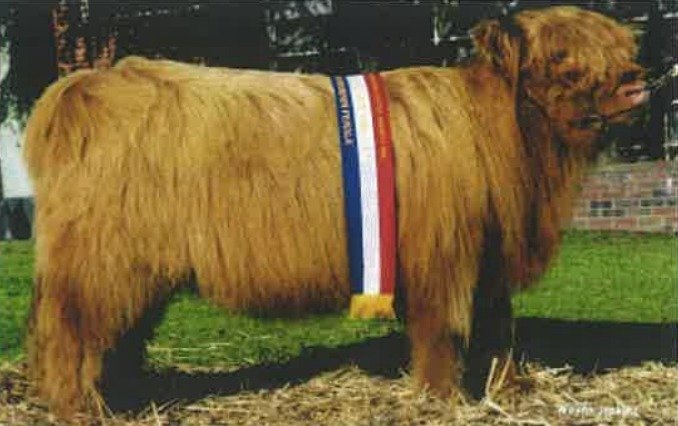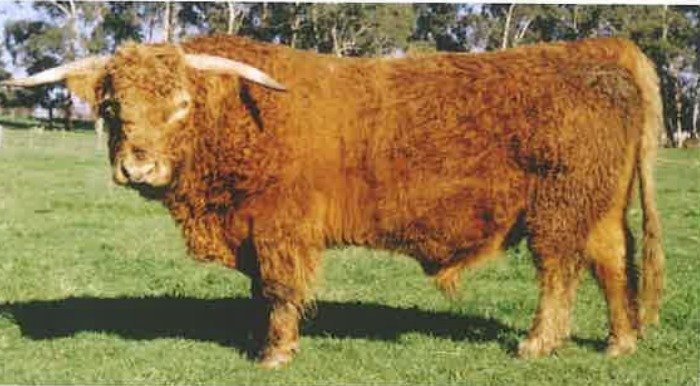Chapter 2: Shat Acres' Tiger Lily's Year without a Summer, the History of Shat Acres Highland Cattle
Shat Acres' Tiger Lily's Year without a Summer Chapter 2 of the History of Shat Acres Highland Cattle
"I know you," the man with a distinctive accent said as he approached Ray in the hotel lobby.
It was 2006, in Sheridan, Wyoming. Ray Shatney and I were attending the International Highland Cattle Gathering, which at one time was held every five years in countries throughout the world. This year the United States hosted the event. Enthusiastic Highland owners from Canada, Denmark, Germany, Scotland, Sweden, New Zealand, and Australia joined American breeders. "You do?" Ray questioned, recognizing neither the face nor the accent.
"Tiger Lily!" the man responded excitedly. "Shat-Acres Tiger Lily! Wait here. I'll be right back."
Born in 1911, the same year the Titanic went down, Carroll Shatney was always a man ahead of his time. In the 1940's he already knew that the one thing you could not make more of was land. Purchasing the hundred-acre farm from his father in 1940 for $2000, he quickly paid off that loan in two years by milking cows, selling eggs, and cutting timber. He then began acquiring additional land, and purchasing other farms until he owned over seven hundred acres. In the 1940's, 1950's, and 1960's, Carroll ran a profitable dairy farm, milking around 140 Ayrshire cows.
One prize cow nearly broke the world's record in producing milk, giving over 41,000 pounds of milk in 378 days. Carroll had the first diesel bulldozer in the town of Greensboro and the first corn chopper, which he used to do custom chopping in the area. Between 1940 and 1960, Carroll caught 468 heads of wild cattle that farmers could not bring back from summer pastures. He first caught them by running them down himself, later with the help of his trained dogs. The dogs came into Greensboro Bend on a railroad car from Texas.
Most of all, Carroll Shatney knew cattle. He could walk into a dairy barn of one hundred milkers and in just a few minutes pick out the five top-producing cows without ever seeing a statistic. One time at a cattle auction, every time Carroll made a bid a fellow across the room raised his hand. Carroll later asked him why he always bid on the same animal Carroll was trying to purchase. "If it's good enough to go into Carroll Shatney's barn, it's good enough for mine," was the reply.
Ray does not believe his dad ever went to school. There was never any mention of attending school from either his mother or father, although, with no formal training, Carroll read whenever he had the chance. When Carroll was six years old, he began cleaning outhouses at the summer camps on Caspian Lake in Greensboro, where people traveled by train from cities in Massachusetts and New York. When Carroll turned twelve, he left home, hiring out for room and board. Ray recalls his father working daylight to dark seven days a week, every day that he ever knew him.
Carroll was always thinking of ways to be innovative to improve his farm and Highland fold. In the late 1970's Carroll began cross-breeding his Highland cattle with Beefalo, long before it became a popular thing to do. After trying that for a couple of years, he decided to go back to his purebred registered Highlands. During summer months, Carroll brought his Highlands from one county fair to another in Vermont, New Hampshire, and even Danbury, Connecticut. At the Danbury Fair, three hundred busses a day brought people to the event to see the sights, including Carroll's Highland cattle. Such a crush of people wanted to see the long-horned and long-haired "hippy cows" that Carroll and Leona had to put ropes behind the cattle so they could get in to clean the animals out. 250,000 people annually attended the Danbury Fair alone. In the many decades of spending summers sharing his Highlands with the public at county fairs, Carroll put Shat Acres Highlands in front of over three million people! At the Danbury Fair, Carroll was even invited to bring one of his Highlands to appear on the Captain Kangaroo show. Carroll declined.
Brigadier Ruadh Son of Tiger Lily, has 60 offspring including two Australian National Show Grand Champion Bulls
When Carroll first began raising and breeding Highland cattle, Highlands were considered a heritage breed at risk for extinction. There were very few Highland cattle on the east coast of the U.S. and even fewer in Vermont. From so much exposure to the public, Shat Acres Highland cattle had become well known. Many countries throughout the world were just beginning their Highland registries. In the late 1980s, David Miller, co-owner of the Australian publication Grass Roots, decided to import cattle and embryos from the United States to enlarge the fledgling Australian Highland Cattle Registry. Carroll Shatney was contacted. Would he be willing to send Highland cattle or embryos to Australia?
With Greensboro Bend just 30 miles shy of the Canadian border, it seemed via Canada might be a feasible way to export cattle overseas. Carroll's Shat Acres Highland would need to be quarantined for six months in Canada prior to leaving North America for Down Under. Weanling Shat-Acres Tiger Lily, Reg. # 19633, DOB 4/24/1988 was loaded into the back of Carroll's wooden-sided farm truck in Greensboro Bend for the ride to Vermont's northern border adjoining Canada. Clearing customs, Tiger Lily crossed the border, where she would quarantine for six months. It was late fall when the spring calf arrived in Canada. After spending the winter in quarantine, Shat-Acres Tiger Lily was led into the belly of a plane, flying the perhaps not-so-friendly skies to Australia. It is hard to imagine what it must have been like for young Tiger Lily as she was transported to Australia. We do not like an animal to trailer alone for even a brief time-it must have been a frightening trip for little Tiger Lily!
Tiger Lily had spent the winter quarantined in Canada. When she was led off the airplane in Australia, it was winter again. Although Tiger Lily had lost a summer, she was about to gain infamy in her new forever home. Shat-Acres Tiger Lily, daughter of Shat-Acres Pond Lily #14726 and Owl Rock Imperial #17972 had offspring that became Australian National Grand Champions, several grandchildren who became Australian National Grand Champions, and great- and great-great-grandchildren who are still winning Australian National Grand Championships. Many notable Australian breeders still have and love their Tiger Lily descendants; some have drawn embryos on their Shat Acres girls, sending those embryos to New Zealand.
Tiger Lily Shat Acres Highlands
Brigadier Ruadh Son of Tiger Lily, 60 offspring including two Australian National Show Grand Champion Bulls
Maxwell Silver Hammr of Rahil Park, Tiger Lily's Grandson
Rebecca Bhuidhe of Rahil Park, Granddaughter of Tiger Lily
Ray did not have to wait long in the Sheridan, Wyoming, hotel lobby. Soon the elevator doors opened, and the man breathlessly returned, waving an embossed paper in his hand. "Here, see?" he said, pointing vigorously to the registration document. "Look right here: Shat-Acres Tiger Lily. My cattle are descended from your fold like so many cattle in the Australian Highland Cattle Registry. Shat- Acres Tiger Lily was important in building Australia's quality Highland genetics. She still is!"
In 1978 Ray took his dad on a fishing excursion to Lake Romain, Canada. They traveled 400 miles from the farm in Greensboro Bend, Vermont-Carroll's only trip to Canada, save bringing Tiger Lily across the border. Carroll Shatney never got on an airplane, but his heifer Shat-Acres Tiger Lily did. And although 400 miles from home was the farthest Carroll Shatney ever traveled from where he was born and farmed all his life, his beloved Shat Acres Highland cattle are known all over the world.
A special thank-you to Aussie breeders Glen Hastie of Barnsley Highland Cattle, Trevor Perry of MacLadanae, and Erica Smith of Glenstrae for their love and care of the Grand Old Breed, their preservation of quality heritage genetics, and their assistance in researching and sharing the history of world-traveler Shat-Acres Tiger Lily. Stay tuned for the continuing History of Shat Acres Highland Cattle.




